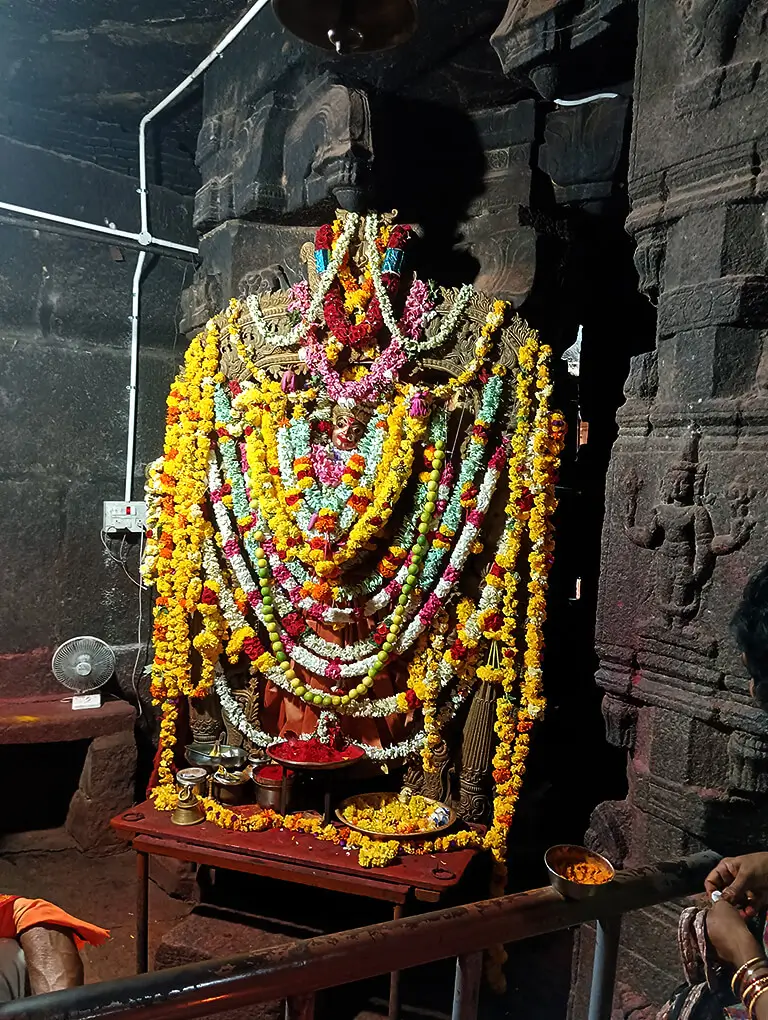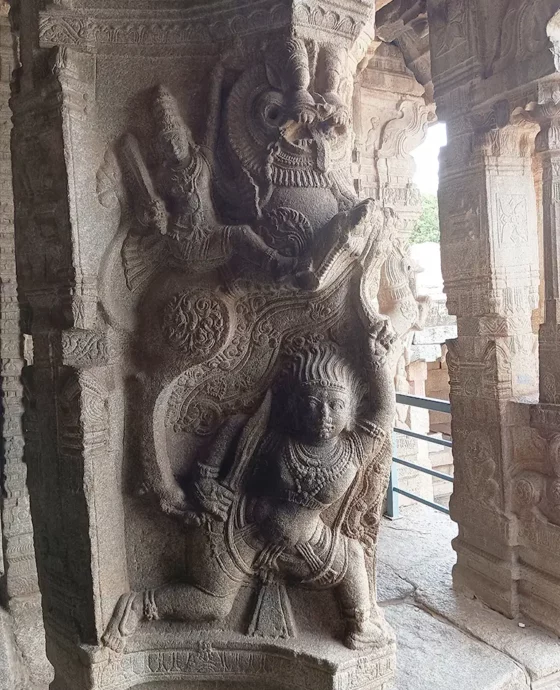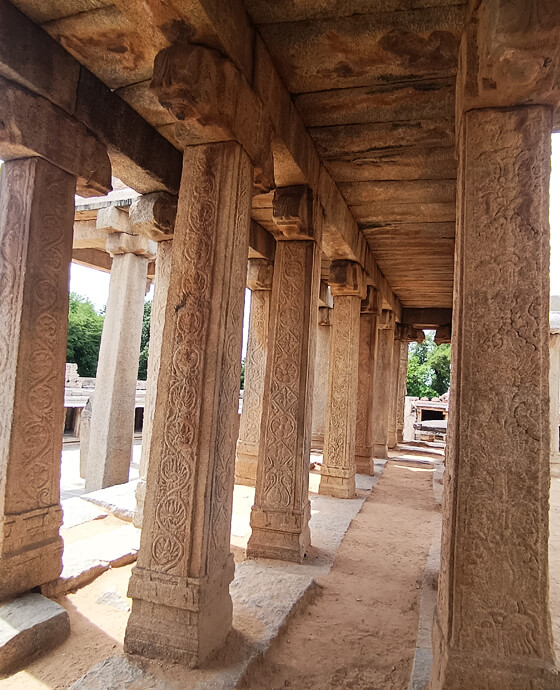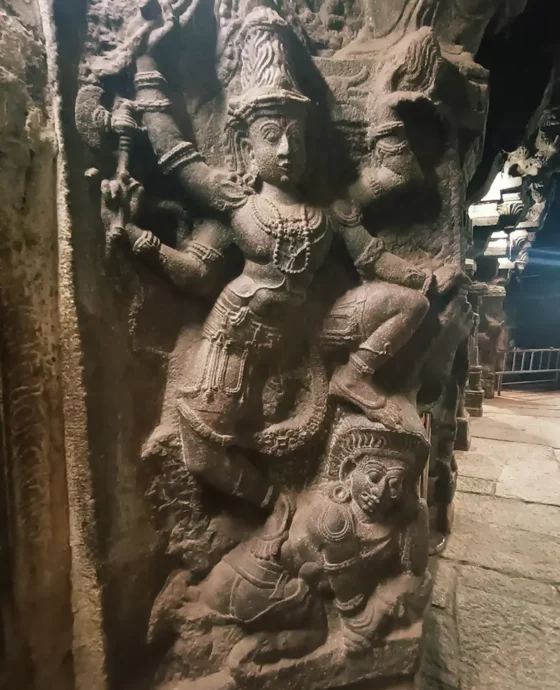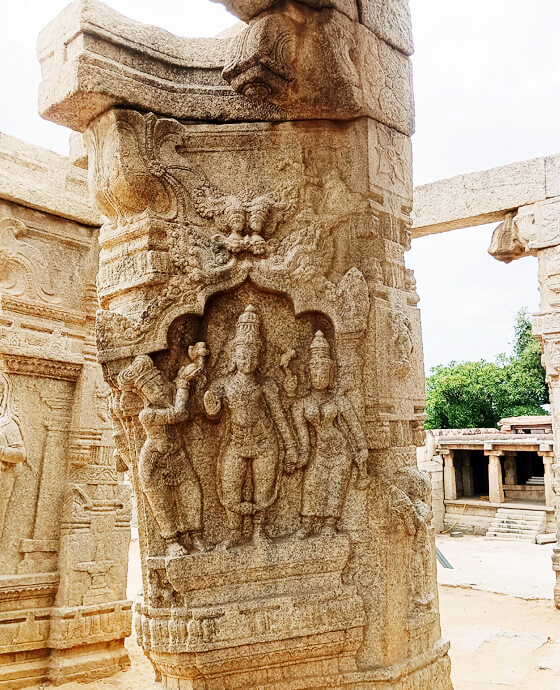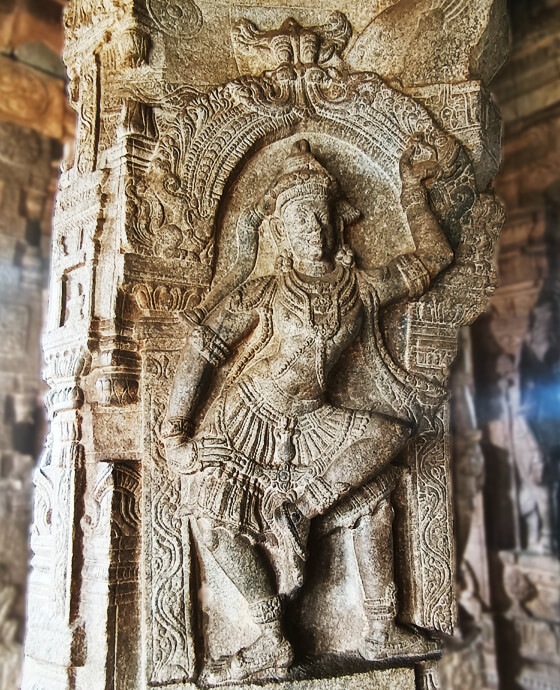Veerabhadra Swamy Garbhagriha
Veerabhadra Swamy Garbhagriha
In the heart of Lepakshi, Andhra Pradesh, lies a treasure trove of architectural wonders—the Veerabhadra Temple. As you explore the sanctified grounds of this ancient temple complex, you’ll encounter not just one, but an array of fascinating shrines and structures. In this article, we embark on a journey to unveil the intricate details of Lepakshi’s sacred edifices, each offering a unique glimpse into the rich tapestry of Indian history and spirituality.
The Majestic Veerabhadra Swamy Shrine
At the heart of the second enclosure stands the majestic main shrine dedicated to Virabhadra. This awe-inspiring sanctuary, facing north, comprises the garbhagriha, antarala, pradakshina (circumambulatory passage), mukha mandapa, a pillared corridor around the mukhamandapa, and the natyamandapa.
Adjacent to the mukhamandapa lies the shrine of Vishnu, facing the east. This shrine is referenced as the Ranganatha shrine, bearing an inscription from the 16th century, dating back to Saka 1459 (A.D. 1537). Inside, a sanctum holds a standing image of Vishnu, flanked by devis.
Among the numerous sacred spaces within the temple complex, one finds a small shrine nestled in the north-west corner of the second enclosure. This humble abode comprises a garbhagriha (sanctum) and a mandapa (hall) preceding it. While the mandapa features four rows of four pillars, adorned with Vijayanagara corbels, the garbhagriha bears the marks of time, exhibiting signs of ruin.
Another noteworthy shrine, the Anjaneya Shrine, is located a short distance to the south-east of the previous one. Facing the east, this shrine incorporates a garbhagriha and a modest mandapa. Its plain walls and flat roof set the tone for simplicity. Inside the mandapa, one can encounter a standing image of Anjaneya, with hands in anjali, inviting devotees into his presence.
Exploring the Vishnu Shrine
The Vishnu shrine faces east and features an entrance on the west wall of the mukhamandapa of the Virabhadra shrine. As per an inscription discovered at Chautakuntapalli, this shrine is referred to as the Ranganatha shrine. The shrine’s architecture showcases an adhishtana adorned with intricate layers, a plain wall, and a projecting cornice with gables. Above, you’ll find a row of makaras, while the vimana contains two talas, each featuring the kuta, panjara, sala panjara, and kuta series. A step above the second tala displays a lion in each of the four corners, while the sikhara takes on a four-sided form with simhalalata gables in the center of each side. Lotuses, with a kalasa at their core, crown the sikhara. This is a dvitala vimana following the nagara architectural style.
Unveiling the Papavinasesvara Shrine
Facing the west, the Papavinasesvara shrine comprises the garbhagriha and antarala. It maintains plain walls and features a vimana above the garbhagriha, showcasing a single tala adorned with the kuta, panjara, sala, panjara, and kuta series. Nandi sculptures grace each corner of the phalaka above the tala. With its round sikhara, this shrine represents an ekatala vimana following the vesara style.

Miniature Shrines, Sayanagara, and More
Within the temple complex, you’ll also discover a miniature shrine to the right of the entrance to the antarala of the Papavinasesvara shrine. This charming addition features a garbhagriha with plain walls and a four-faced Nagara Sikhara on the roof, housing an image of Ganesha.
Further south, the Sayanagara beckons—a dimly lit chamber with ceilings adorned with paintings. Adjacent to it lies the Parvathi Shrine, facing east, consisting solely of a garbhagriha with plain walls, and a flat roof sheltering a standing image of Parvathi.

Exploring the Ramalinga, Bhadrakali, and Hanumalinga Shrines
In the western wing of the pradakshina surrounding the garbhagriha and antarala of the Virabhadra shrine, you’ll discover three shrines—Ramalinga, Bhadrakali, and Hanumalinga. Each shrine faces east, containing garbhagrihas with their own unique sacred attributes.
The Ramalinga shrine, situated at the southwestern corner, features a linga on a panavatta. Adjacent to it lies the Bhadrakali shrine, enshrining an image of Bhadrakali. Finally, the Hanumalinga shrine, situated to the north, houses a garbhagriha with plain walls and a four-faced Nagara Sikhara above the roof, along with a linga on a panavatta.
The Veerabhadra Temple at Lepakshi unfolds as a sanctuary of profound significance, embodying India’s architectural and spiritual heritage. Each shrine, with its distinct features and stories, invites you to embark on a spiritual and historical journey through time. Whether you’re








